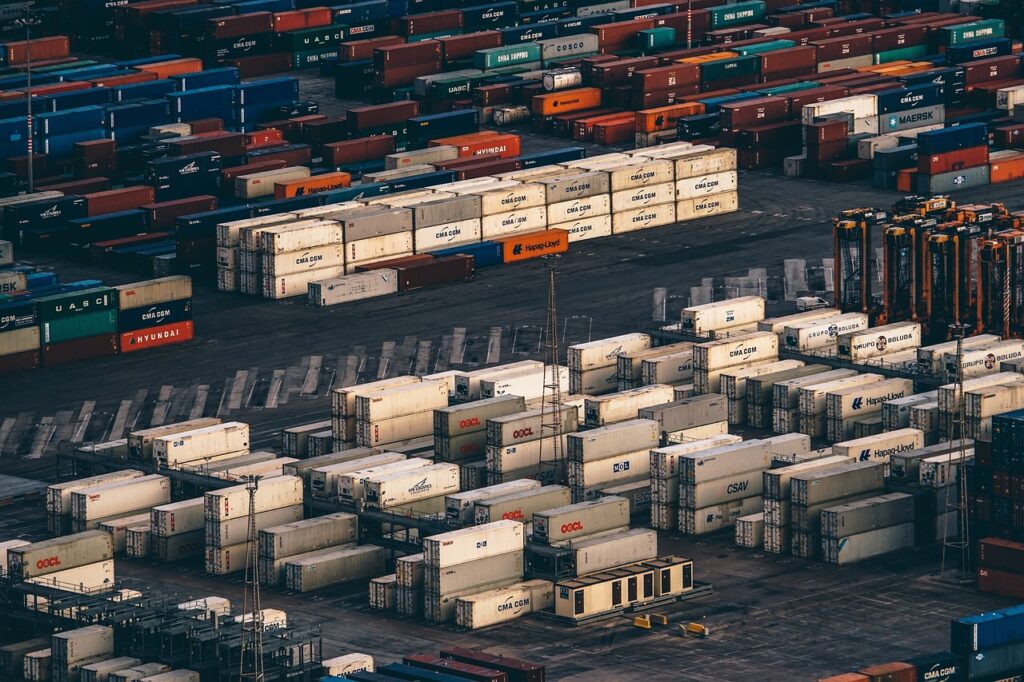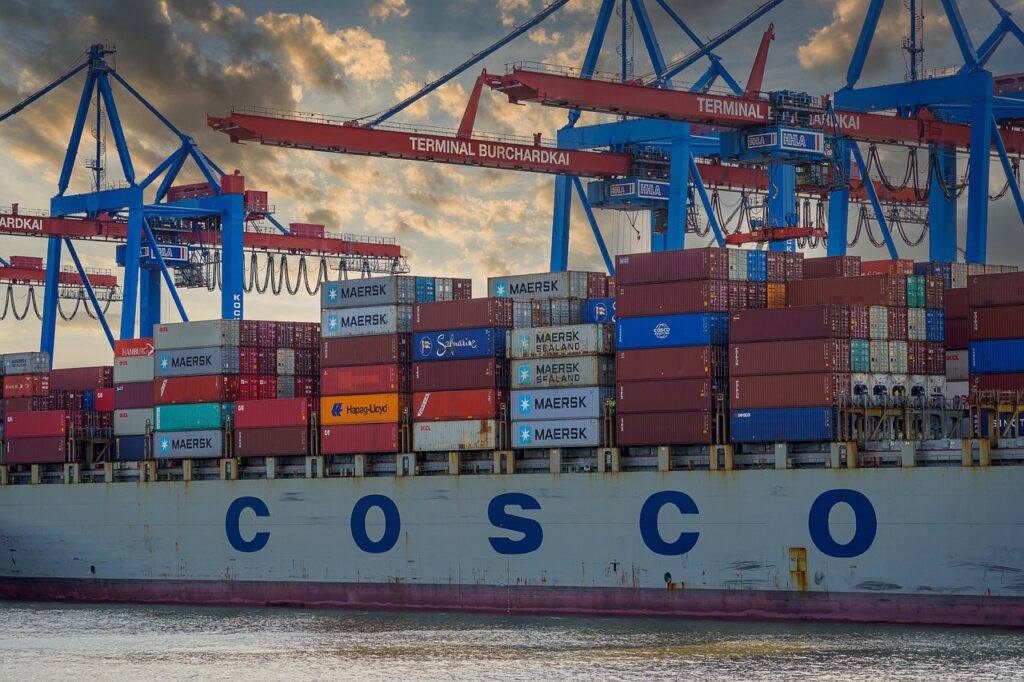
Introduction
For African exporters, foreign exchange (FX) risk is more than just a line item on a financial statement; it’s an existential threat to profitability and business sustainability. A shipment of coffee from Kenya or cocoa from Ghana can lose significant value in the time it takes for payment to clear through traditional banking channels.
Consider the reality: an exporter negotiates a price based on today’s exchange rate, ships goods that take weeks to arrive, waits for the buyer’s inspection and approval, then watches helplessly as payment crawls through correspondent banking networks. By the time the payment finally arrives and is converted to local currency, weeks or months have passed. In that window, a local currency might depreciate 5%, 10%, or, in extreme cases, 20% or more. For businesses operating on thin margins, often with a 10-15% margin in commodity exports, such losses can mean the difference between profit and bankruptcy.
The situation is compounded by the fact that African currencies rank among the most volatile in the world. The Ghanaian cedi, for instance, has experienced periods of double-digit depreciation against the dollar in single years. The Zambian kwacha, Ethiopian birr, and Egyptian pound have all faced similar pressures. Even relatively stable currencies, such as the Kenyan shilling, aren’t immune to sudden devaluations triggered by political events, commodity price shocks, or shifts in monetary policy.
But stablecoins are emerging as a powerful tool to mitigate these risks, offering African businesses a faster, more predictable alternative to traditional currency exchanges. This isn’t theoretical; it’s happening now, as exporters across the continent discover that blockchain-based payment rails can protect their hard-earned revenues from the erosion of currency volatility.

Understanding FX Risk in African Exports
Foreign exchange risk (also called currency risk) arises when the value of one currency changes against another between the time a transaction is initiated and settled.
For African exporters, this risk is real and recurring. For instance:
- A Kenyan tea exporter might invoice a U.K. buyer in USD, but by the time payment arrives, the Kenyan shilling has depreciated, reducing profits.
- A Ghanaian cocoa supplier could face payment delays because of bank intermediaries or currency conversion bottlenecks.
Traditional banking systems rely on correspondent banks that often take 3–7 days to complete an international transfer. During that period, even minor currency fluctuations can erode a significant portion of the exporter’s margin.
Traditional hedging instruments like forward contracts and currency options exist, but they’re often inaccessible to small and medium-sized enterprises (SMEs) that make up the backbone of African exports. High minimum transaction sizes, complex paperwork, and relationships with international banks create barriers that exclude most exporters from effective risk management tools.
What Are Stablecoins and How Do They Work?
Stablecoins are cryptocurrencies designed to maintain a stable value by being pegged to a reserve asset, usually the U.S. dollar, euro, or gold.
Types of stablecoins include:
- Fiat-backed stablecoins – such as USDT (Tether) and USDC (USD Coin), backed 1:1 by real dollars or cash equivalents.
- Commodity-backed stablecoins – backed by physical assets like gold.
- Algorithmic stablecoins – use software mechanisms to maintain their peg, though they are less common and riskier.
Unlike volatile cryptocurrencies like Bitcoin or Ethereum, stablecoins are designed to hold their value, making them ideal for trade and cross-border payments.

How Stablecoins Work as FX Risk Mitigation Tools
Stablecoins are cryptocurrencies pegged to stable assets, most commonly the US dollar. Popular stablecoins like USDC, USDT, and DAI maintain a 1:1 value ratio with the dollar, providing the stability of fiat currency with the speed and accessibility of blockchain technology.
Unlike traditional cryptocurrencies such as Bitcoin or Ethereum, which can swing 10-20% in a single day, stablecoins are designed to maintain price stability through various mechanisms. USDC and USDT are backed by dollar reserves held in regulated financial institutions, meaning each token is theoretically redeemable for one US dollar. DAI uses a different approach, maintaining its peg through smart contracts and over-collateralization with other crypto assets.
For African exporters, the appeal is straightforward: stablecoins combine the best attributes of cryptocurrency, fast settlement, low fees, 24/7 availability, and borderless transfers with the predictability of holding US dollars. It’s like having a dollar bank account that can send and receive payments instantly to anyone in the world with an internet connection, no correspondent banks required.
For African exporters, stablecoins offer a practical solution to FX risk in several ways:
- Immediate Settlement
Instead of waiting weeks for international wire transfers, payments in stablecoins settle within minutes. This dramatically reduces exposure to exchange rate fluctuations during the payment window. A SWIFT payment from Europe to Kenya might take 3-5 business days and pass through multiple correspondent banks, each taking a cut and applying their own exchange rates. A stablecoin transfer completes in 2-15 minutes, depending on the blockchain used, with full transparency and finality. The exporter knows exactly when the payment arrives and can immediately act on that certainty.
- Dollar Denomination
By receiving payment in dollar-pegged stablecoins, exporters can hold value in a stable currency without needing a US bank account. They can then convert to local currency when rates are favourable or when they need to pay suppliers and employees. This is particularly powerful for exporters who want to accumulate dollar-denominated savings but face barriers to opening offshore accounts. Instead of being forced to convert immediately at potentially unfavourable rates, they gain optionality and timing flexibility. Some exporters use this strategically, converting only what they need for immediate local expenses while holding the remainder in stablecoins as a store of value.
- Lower Transaction Costs
Traditional international transfers can cost 3-7% in fees, plus unfavourable exchange rates applied by banks that might differ from market rates by another 2-3%. Stablecoin transactions typically cost a fraction of a percent, often just a few dollars in network fees, regardless of transaction size. For a $50,000 payment, an exporter might pay $25-50 in total costs versus $2,500-5,000 through traditional channels. Over dozens of transactions annually, these savings compound dramatically. Even factoring in the cost of converting stablecoins to local currency, the total cost structure usually favors the crypto rail significantly.
- Accessible Hedging
Holding receivables in stablecoins serves as a natural hedge against local currency devaluation, without the complexity of formal hedging instruments. Traditional hedging requires relationships with international banks, minimum transaction sizes that exclude smaller exporters, and complex documentation. Stablecoins democratize dollar exposure. A small-scale exporter can hold $5,000 in USDC just as easily as a large corporation can hold $5 million. The hedge is self-custodial, transparent, and doesn’t require counterparty credit approval or ongoing relationship management.
- Working Capital Management
Beyond simple payment receipts, stablecoins enable more sophisticated treasury management. Exporters can maintain separate digital wallets for different purposes, one for incoming receivables, another for supplier payments, and another for payroll conversion. This compartmentalization helps with cash flow forecasting and budget discipline. Some businesses even use stablecoins to pay their own international suppliers directly, creating a closed loop that never touches traditional banking. This is especially valuable for exporters who import inputs. A coffee exporter in Ethiopia who imports packaging materials from China, for instance, can receive euro payments from European buyers in stablecoins and pay Chinese suppliers in the same stablecoins, avoiding multiple currency conversions entirely.
- 24/7 Operations
Unlike traditional banking, which operates on business day schedules with weekend and holiday closures, stablecoin networks never sleep. An exporter can receive payment at 2 AM on Sunday and immediately begin planning their currency conversion strategy. This is particularly valuable during periods of currency volatility when timing conversions to coincide with favorable rates can make material differences to the bottom line.

Challenges and Considerations
While stablecoins present a transformative solution to Africa’s FX problem, exporters should still approach adoption with awareness and strategy. Here are the key challenges and how to navigate them:
1. Regulatory Uncertainty and Compliance
Cryptocurrency regulation varies widely across African nations.
- In Nigeria, crypto trading has faced restrictions from the central bank, though the government is now exploring clearer frameworks for blockchain-based finance.
- Kenya, Ghana, and South Africa are taking more progressive approaches, with regulators working to establish guidelines for digital assets and virtual asset service providers (VASPs).
This evolving regulatory landscape can make exporters hesitant to adopt stablecoin payments.
How to mitigate
Work with licensed and compliant platforms like Yogupay, which ensure all transactions follow anti-money laundering (AML) and know-your-customer (KYC) requirements. Staying informed about local regulations and using platforms that offer transparency reduces legal and financial risks.
2. Stablecoin Issuer Transparency and Counterparty Risk
Not all stablecoins are created equal. Some issuers have been criticized for a lack of transparency about their reserves. If an issuer fails to maintain adequate collateral, the stablecoin may lose its peg to the dollar, undermining its stability.
How to mitigate
Choose trusted and fully audited stablecoins such as USDC (issued by Circle) or PayPal USD, which publish regular attestation reports verifying their reserves. Avoid unregulated or algorithmic stablecoins with unproven track records.
3. Limited Infrastructure and Education
Many African exporters, especially small and medium enterprises (SMEs), are still new to blockchain technology.
- They may lack digital wallets, crypto literacy, or access to reliable internet connectivity.
- Fear of scams or misinformation can also deter adoption.
How to mitigate
Platforms like Yogupay simplify the process with user-friendly interfaces, educational support, and localized on/off-ramp solutions, making it easier for businesses to send & receive stablecoin payments without needing deep crypto expertise.
4. Conversion and Liquidity Challenges
Even though stablecoins hold value in USD, exporters eventually need to convert them into local currencies for operations, paying suppliers, employees, or taxes.
If liquidity in a given market is low, conversion rates may be less favourable or take longer to process.
How to mitigate
Use established payment partners like Yogupay that maintain strong liquidity pools in multiple African markets, ensuring fast and competitive conversions between stablecoins and local fiat currencies.
5. Volatility in Crypto Markets and Perception Issues
While stablecoins themselves are designed to be stable, the broader crypto industry still faces scepticism due to volatility and fraud incidents. This can make some international buyers reluctant to transact in digital currencies.
How to mitigate
Exporters can reassure buyers by using well-recognized, regulated stablecoins and providing clear payment instructions through credible platforms. Over time, as stablecoin use grows in global trade, trust and perception will continue to improve.
6. Cybersecurity and Custody Risks
Digital assets are stored in wallets, which can be vulnerable to hacking or phishing if not properly secured. A single mistake, like losing a private key, could result in permanent loss of funds.
How to mitigate
- Use non-custodial wallets with strong encryption or work with regulated custodians that provide insurance coverage.
- Implement two-factor authentication (2FA), cold storage, and employee training on digital security.
- Yogupay, for example, integrates institutional-grade security to protect business transactions.
While these challenges exist, none are insurmountable. With proper education, regulatory clarity, and partnerships with trusted fintech platforms, African exporters can safely unlock the benefits of stablecoins, gaining more control over FX exposure, liquidity, and international growth.

The infrastructure is Already Emerging
Across Africa, the infrastructure to support stablecoin adoption is rapidly developing. Mobile money platforms like M-Pesa are exploring blockchain integration. Cryptocurrency exchanges with stablecoin on-ramps and off-ramps are operating in Nigeria, Kenya, South Africa, and beyond. Some platforms specifically cater to businesses, offering corporate wallets and automated conversion services.
The infrastructure landscape includes several key components. Local cryptocurrency exchanges now offer business accounts with features specifically designed for exporters, bulk conversion tools, API integrations for automated treasury management, and dedicated relationship managers who understand trade finance. Platforms like Yellow Card, Quidax, and Paxful have built networks across multiple African countries, making it increasingly easy to convert between stablecoins and local currencies.
Peer-to-peer (P2P) marketplaces have also flourished, creating liquid markets for stablecoin trading even in countries with restrictive banking regulations. These platforms match buyers and sellers directly, with the platform providing escrow services to ensure safe transactions. In countries where banking infrastructure is weak or crypto regulations are unclear, P2P markets provide crucial liquidity for exporters who need to convert stablecoins to local currency.
Mobile money integration represents perhaps the most exciting frontier. With over 500 million mobile money accounts across Africa, the integration of stablecoins with existing mobile money rails could make crypto-based trade finance accessible to even the smallest exporters. Several fintech companies are building bridges between blockchain networks and mobile money platforms, enabling users to receive stablecoins and automatically convert to mobile money balances that can be used for everyday transactions.
Payment processors focused on African businesses are also emerging. These platforms allow exporters to generate payment links or invoices that international buyers can pay with stablecoins, credit cards, or traditional bank transfers with automatic conversion to the exporter’s preferred currency. This reduces friction for buyers who may be unfamiliar with cryptocurrency while still giving exporters the benefits of stablecoin settlement.
In Nigeria, despite regulatory challenges, peer-to-peer stablecoin trading has exploded as businesses and individuals seek to protect value against naira devaluation. Trading volumes on P2P platforms regularly exceed millions of dollars daily, creating deep liquidity that makes conversion between stablecoins and naira efficient and cost-effective. This organic market development has happened precisely because the traditional financial system has failed to provide adequate foreign exchange access and stability.
In Kenya, farmers’ cooperatives are beginning to experiment with receiving export payments in stablecoins. Several tech-savvy agricultural cooperatives in the coffee and tea sectors have piloted programs where export payments arrive in USDC, and the cooperatives manage conversion and distribution to members. Early results show significant cost savings and faster payment cycles, with some cooperatives reporting 40-50% reductions in total payment processing costs.
Ghana has seen similar experimentation in the cocoa sector, where cooperatives are using stablecoins to bypass expensive correspondent banking relationships and reduce the time between shipment and farmer payment from 30-45 days down to 7-10 days.
These aren’t fringe experiments; they’re pragmatic responses to real financial challenges. When traditional finance imposes costs of 5-10% and delays of weeks, and stablecoins offer costs below 2% and settlement in hours, the economic logic becomes compelling enough to overcome technological hesitation.

The Role of Platforms Like Yogupay
Yogupay is bridging the gap between blockchain finance and real-world trade.
Here’s how it supports African exporters:
- Accepts stablecoin payments securely from global buyers.
- Enables instant conversion from stablecoins to local currencies at competitive rates.
- Reduces dependence on volatile forex markets and slow banking systems.
- Provides exporters with a fast, compliant, and cost-effective payment solution.
By leveraging Yogupay, African exporters can confidently engage in global trade while minimizing FX losses and transaction delays.

Conclusion
Africa stands at the crossroads of a major financial transformation. The continent’s exporters, from coffee and tea producers in East Africa to mineral suppliers in Southern Africa, are increasingly part of global trade networks. Yet, the persistent challenge of foreign exchange volatility, slow banking processes, and high remittance fees continues to erode profitability and limit competitiveness.
Stablecoins are rewriting that story. They bridge the gap between traditional finance and the digital economy, offering exporters the rare combination of stability, speed, and accessibility. By transacting in USD-pegged stablecoins like USDT or USDC, African businesses can lock in value, eliminate the pain of currency swings, and receive payments in minutes rather than days.
Beyond mitigating FX risk, stablecoins open new doors for innovation:
- Exporters can manage their treasury digitally, holding reserves in stablecoins to hedge against future volatility.
- Buyers can pay seamlessly from anywhere in the world, without worrying about correspondent bank delays or complex currency conversions.
- SMEs can now compete globally, no longer sidelined by limited access to foreign bank accounts or international payment networks.
However, responsible adoption is key. Partnering with trusted, compliant, and Africa-focused payment providers ensures that exporters can harness the benefits of blockchain finance safely and effectively.
That’s where Yogupay comes in, simplifying global payments for African traders through secure, fast, and transparent stablecoin transactions. With Yogupay, exporters can accept payments from international clients, instantly convert stablecoins into local currencies, and avoid unnecessary FX losses, all while staying compliant with financial regulations.
As stablecoins continue to gain legitimacy worldwide, Africa’s exporters have a chance to leapfrog traditional systems and take control of their financial future. The businesses that adopt early will not only reduce their exposure to FX risks but also position themselves at the forefront of a more inclusive, digital, and globally connected trade ecosystem.
Stablecoins are not just a hedge; they’re a gateway to the future of African exports.
Want to learn how stablecoins can transform your export business?
Talk to a Yogupay expert and discover the simplest way to manage international payments without FX stress.
Book a free consultation today.